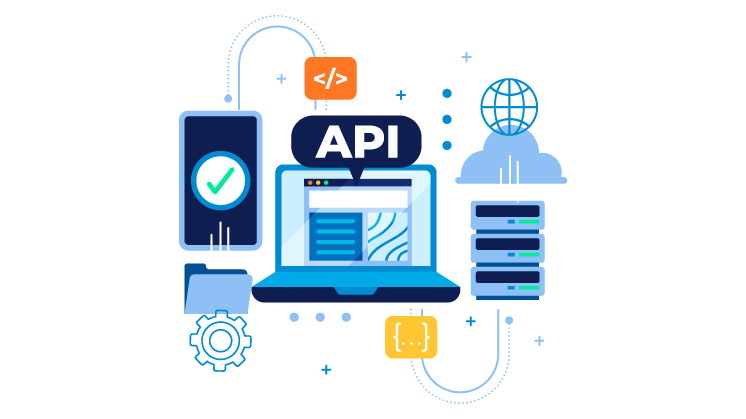Online shopping has become a part of our daily lives. This is why the e-commerce industry recorded a massive revenue of USD 791.01 billion in the US alone in 2022.
Additionally, the phenomenal growth in APIs in recent years has opened the door to new opportunities for e-commerce businesses worldwide.
This blog post will explain how APIs are revolutionizing the e-commerce industry and, ideally, helping various e-commerce businesses exceed customers’ expectations globally.
Voice Commerce is Gaining Popularity
Voice commerce is an innovative technology that primarily uses the concept of voice-based interaction. The interaction takes place through smart home devices or mobile devices.
Moreover, voice APIs change customers’ voice interactions and send them to e-commerce APIs as commands. Therefore, the importance of voice commerce grows to another extent as e-commerce site owners can integrate it with voice-enabled devices and revolutionize the e-commerce industry.
That’s because voice commerce transactions will increase from 4.6 billion USD in 2021 to 19.4 billion USD in 2023.
Collaboration and Personalization
When managing e-commerce sites or businesses, the role of APIs (Application Programming Interfaces) comes in handy. In reality, APIs help businesses integrate various functions simultaneously.
For instance, they can automatically integrate advertisements, point-of-sale systems, fulfillment, and shipping services appropriately. By doing so, they can offer a comprehensive solution to their consumers.
From a personalization perspective, APIs also help companies or brands develop long-term yet results-driven customer relationships. Through APIs, businesses can create products based on customers’ behavior and preferences.
Similarly, APIs let companies improve coordination among channels like vendors, services, and e-commerce platforms.
Improving Omnichannel Engagement through Headless E-commerce
Headless e-commerce is another impactful trend reshaping the e-commerce landscape for all the right reasons. The trend enhances omnichannel customer engagement by helping e-commerce vendors offer consumers a seamless experience across multiple devices.
In short, platforms only need to enhance their backend capabilities without a storefront when delivering e-commerce services to vendors via all the necessary APIs.
As a result, e-commerce vendors can develop their customized storefronts on these platforms and provide a comprehensive e-commerce experience to new and existing consumers on various devices at a time.
For instance, you are a Square user and want to integrate your WooCommerce store with the Square platform. For that reason, you will have to rely on WooSquare Plus, a robust and secure automated solution.
Hence, you can easily synchronize your WooCommerce store with the Square platform without issues. Moreover, you can streamline your orders and inventory smartly.
Apart from this, you can create results-driven sales funnels using the functionalities of the FunnelKit funnel builder.
Regarding its pricing, you will pay $129 per year to subscribe to its basic plan. The plan ideally fulfills all the requirements of a single site.
In addition, you can subscribe to its Business plan by paying $249 per year, allowing you to optimize 25 sites simultaneously. You can get its professional plan for $199 per year. The plan lets you manage three (3) sites at a time.
Leveraging Marketplaces with APIs
An effective marketplace tactic is a must when reducing stock and logistics issues. The marketplace strategy also requires an efficient combination of APIs and dev portals. Thus, businesses can appropriately build and maintain strategic connections with vendors and partner companies.
Significance of APIs in Business Management
Previously, when e-commerce was nascent, customers used their desktop PCs to perform online shopping activities in different online stores.
At present, the landscape of e-commerce has changed to unprecedented heights. Customers can buy their desired products or services anywhere via smartphones, tablets, and other internet-connected devices.
When delivering next-level shopping experiences to consumers, APIs come in handy. They allow e-commerce companies to connect a wide range of devices and provide customers with an engaging yet optimized e-commerce experience.
When you manage an e-commerce store, you will need to use an array of APIs to merge different processes, including omnichannel experiences, shopping, inventory monitoring and management, marketing, ad campaigns management, fulfillment, payment, shipping, and return.
Besides, you can keep an eye on your consumer buying patterns and preferences with multiple APIs without any fuss. However, managing such APIs in a single e-commerce platform requires efficient monitoring and supervision.
It is still a doable job because e-commerce growth potential will reach new horizons. Unsurprisingly, the e-commerce market is expected to earn a revenue of USD 3,090.00 billion in 2023.
The expected revenue depicts the annual growth rate (CAGR) of 10.6% from 2023 to 2028. The volume of the global e-commerce market is projected to reach USD 4,991.00 billion by the end of 2028.
Wrapping Up
There you have it, folks. E-commerce stores or businesses should not undermine the importance of APIs at any cost. When offering highly optimized shopping or e-commerce experiences, businesses or companies have to depend on APIs as they allow them to integrate different functions like marketing, inventory, sales, fulfillment, shipping, return, etc., under one roof.
As mentioned earlier, the future of the e-commerce market looks promising due to the anticipated growth rate. Therefore, e-commerce stores or brands must create various APIs that help them unleash their potential from a performance and revenue point of view.
In this situation, WooCommerce Plus can play a perfect role as you can easily synchronize your WooCommerce store with the Square platform.
Frequently Asked Questions
- How is API practically applied in e-commerce?
Through catalog APIs, e-commerce sites create and manage product catalogs accordingly. Likewise, you can instantly benefit from catalog APIs when updating thousands of products. Moreover, you can integrate product catalogs with reporting systems, inventory management, etc.
- What APIs are commonly used these days?
Rest APIs are one of the most common APIs specifically suitable for web interactions. Apart from this, SOAP, Webhook, GraphQL, and RPC are other prominent APIs.
- What are the leading examples of APIs used in our daily lives?
Famous API examples related to our everyday lives include Weather Snippets, Travel Booking, Google Maps, Okta, etc.
- What are the numerous types of APIs impacting e-commerce businesses globally?
Currently, e-commerce businesses are taking advantage of different APIs to transform their operations and revenues throughout the world. Here are various APIs already improving the productivity of e-commerce businesses globally:
- Shopping Cart APIs
- Payment APIs
- Login APIs
- Sales Tax APIs
- Social Proof APIs
- Marketing Automation APIs
- Catalog APIs




